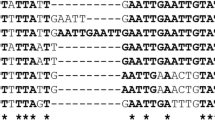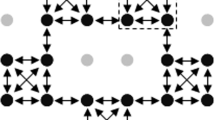Abstract
Perennial ryegrass is an obligate outbreeding pasture grass of the Poaceae family, with a two-locus (S and Z) gametophytic self-incompatibility (SI) mechanism. This system has provided a major obstacle to targeted varietal development, and enhanced knowledge is expected to support more efficient breeding strategies. Comparative genetics and physical mapping approaches have been developed to permit molecular cloning of the SI genes. SI gene-linked genetic markers based on heterologous cDNA restriction fragment length polymorphisms (RFLPs) and homologous genomic DNA-derived simple sequence repeats (SSRs) were converted to single nucleotide polymorphism (SNP) format for efficient genotyping. Genetic mapping identified the location of SI loci and demonstrated macrosynteny between related grass species. S- and Z-linked bacterial artificial chromosome (BAC) clones were sequenced using massively parallel pyrosequencing technology to provide the first physical mapping data for Poaceae SI loci. The sequence assembly process suggested a lower prevalence of middle repetitive sequences in the Z locus region and hence precedence for positional cloning strategy. In silico mapping using data from rice, Brachypodium distachyon and Sorghum revealed high sequence conservation in the vicinity of the Z locus region between SI and self-compatible (SC) grass species. Physical mapping identified a total of nine genes encoded in the Z locus region. Expression profiling and nucleotide diversity assessment identified two Z-linked genes, LpTC116908 and LpDUF247, as plausible candidates for the male and female determinants of the S-Z SI system.




Similar content being viewed by others
References
Alonso Segura JM, Socias i Company R (2007) Negative inbreeding effects in tree fruit breeding: self-compatibility transmission in almond. Theor Appl Genet 115:151–158
Armstead I, Donnison I, Aubry S, Harper J, Hörtensteiner S, James C, Mani J, Moffet M, Ougham H, Roberts L, Thomas A, Weeden N, Thomas H, King I (2007) Cross-species identification of Mendel’s I locus. Science 315:73
Baumann U, Juttner J, Bian XY, Langridge P (2000) Self-incompatibility in the grasses. Ann Bot 85:203–209
Bian XY, Friedrich A, Bai JR, Baumann U, Hayman DL, Barker SJ, Langridge P (2004) High-resolution mapping of the S and Z loci of Phalaris coerulescens. Genome 47:918–930
Boskovi′c R, Tobutt KR, Duval H, Batlle I, Dicenta F, Vargas FJ (1999) A stylar ribonuclease assay to detect self-compatible seedlings in almond progenies. Theor Appl Genet 99:800–810
Bosković RI, Tobutt KR, Ortega E, Sutherland BG, Godini A (2007) Self-(in)compatibility of the almonds P. dulcis and P. webbii: detection and cloning of ‘wild-type Sf’ and new self-compatibility alleles encoding inactive S-RNases. Mol Genet Genomics 278:665–676
Caetano-Anolle′s G (2005) Evolution of genome size in the grasses. Crop Sci 45:1809–1816
Cogan NO, Ponting RC, Vecchies AC, Drayton MC, George J, Dracatos PM, Dobrowolski MP, Sawbridge TI, Smith KF, Spangenberg GC, Forster JW (2006) Gene-associated single nucleotide polymorphism discovery in perennial ryegrass (Lolium perenne L.). Mol Genet Genomics 276:101–112
Cornish MA, Hayward MD, Lawrence MJ (1979) Self-incompatibility in ryegrass. I. Genetic control in diploid Lolium perenne L. Heredity 43:95–106
Dean FB, Hosono S, Fang L, Wu X, Faruqi AF, Bray-Ward P, Sun Z, Zong Q, Du Y, Du J, Driscoll M, Song W, Kingsmore SF, Egholm M, Lasken RS (2002) Comprehensive human genome amplification using multiple displacement amplification. Proc Natl Acad Sci USA 99:5261–5266
Devey F, Fearon CH, Hayward MD, Lawrence MJ (1993) Self-incompatibility in ryegrass. XI. Number and frequency of alleles in a cultivar of Lolium perenne L. Heredity 73:262–264
Dracatos PM, Cogan NOI, Dobrowolski MP, Sawbridge TI, Spangenberg GC, Smith KF, Forster JW (2008) Discovery and genetic mapping of single nucleotide polymorphisms in candidate genes for pathogen defence response in perennial ryegrass (Lolium perenne L.). Theor Appl Genet 117:203–219
Dracatos PM, Cogan NO, Sawbridge TI, Gendall AR, Smith KF, Spangenberg GC, Forster JW (2009) Molecular characterisation and genetic mapping of candidate genes for qualitative disease resistance in perennial ryegrass (Lolium perenne L.). BMC Plant Biol 9:62
Draper J, Mur LAJ, Jenkins G, Ghosh-Biswas GC, Bablak P, Hasterok R, Routledge AP (2001) Brachypodium distachyon. A new model system for functional genomics in grasses. Plant Physiol 127:1539–1555
Faville MJ, Vecchies AC, Schreiber M, Drayton MC, Hughes LJ, Jones ES, Guthridge KM, Smith KF, Sawbridge T, Spangenberg GC, Bryan GT, Forster JW (2004) Functionally associated molecular genetic marker map construction in perennial ryegrass (Lolium perenne L.). Theor Appl Genet 110:12–32
Forster JW, Cogan NOI, Dobrowolski MP, Francki MG, Spangenberg GC, Smith KF (2008) Functionally-associated molecular genetic markers for temperate pasture plant improvement. In: Henry RJ (ed) Plant genotyping II: SNP technology. CABI Press, Wallingford, pp 154–187
Fulton TM, Chunwongse J, Tanksley SD (1995) Microprep protocol for extraction of DNA from tomato and other herbaceous plants. Plant Mol Biol Rep 13:207–209
Griffiths S, Sharp R, Foote TN, Bertin I, Wanous M, Reader S, Colas I, Moore G (2006) Molecular characterization of Ph1 as a major chromosome pairing locus in polyploid wheat. Nature 439:749–752
Hackauf B, Wehling P (2005) Approaching the self-incompatibility locus Z in rye (Secale cereale L.) via comparative genetics. Theor Appl Genet 110:832–845
Hancock CN, Kent L, McClure BA (2005) The stylar 120 kDa glycoprotein is required for S-specific pollen rejection in Nicotiana. Plant J 43:716–723
Humphreys MW, Yadav RS, Cairns AJ, Turner LB, Humphreys J, Skøt L (2006) A changing climate for grassland research. New Phytol 169:9–26
International Rice Genome Sequencing Project (2005) The map-based sequence of the rice genome. Nature 436:793–800
Jakob SS, Meister A, Blattner FR (2004) The considerable genome size variation of Hordeum species (Poaceae) is linked to phylogeny, life form, ecology, and speciation rates. Mol Biol Evol 21:860–869
Jones ES, Dupal MD, Dumsday JL, Hughes LJ, Forster JW (2002a) An SSR-based genetic linkage map for perennial ryegrass (Lolium perenne L.). Theor Appl Genet 105:577–584
Jones ES, Mahoney N, Hayward MD, Armstead IP, Jones JG, Humphreys MO, King IP, Kishida T, Yamada T, Balfourier F, Charmet C, Forster JW (2002b) An enhanced molecular marker-based map of perennial ryegrass (Lolium perenne L.) reveals comparative relationships with other Poaceae species. Genome Res 45:282–295
Kodad O, Socias i Company R (2008) Variability of oil content and of major fatty acid composition in almond (Prunus amygdalus Batsch) and its relationship with kernel quality. J Agric Food Chem 56:4096–4101
Langridge P, Baumann U, Juttner J (1999) Revisiting and revising the self-incompatibility genetics of Phalaris coerulescens. Plant Cell 11:1826
Lee HS, Huang S, Kao T (1994) S proteins control rejection of incompatible pollen in Petunia inflata. Nature 367:560–563
Li X, Nield J, Hayman D, Langridge P (1994) Cloning a putative self-incompatibility gene from the pollen of the grass Phalaris coerulescens. Plant Cell 6:1923–1932
McClure BA, Haring V, Ebert PR, Anderson MA, Simpson RJ, Sakiyama F, Clarke AE (1989) Style self-incompatibility gene products of Nicotiana alata are ribonucleases. Nature 342:955–957
Opanowicz M, Vain P, Draper J, Parker D, Doonan JH (2008) Brachypodium distachyon: making hay with a wild grass. Trends Plant Sci 13:172–177
Ortega E, Dicenta F (2003) Inheritance of self-compatibility in almond: breeding strategies to assure self-compatibility in the progeny. Theor Appl Genet 106:904–911
Paterson AH (2008) Genomics of sorghum. Int J Plant Genomics 2008:362451
Paux E, Roger D, Badaeva E, Gay G, Bernard M, Sourdille P, Feuillet C (2006) Characterizing the composition and evolution of homoeologous genomes in hexaploid wheat through BAC-end sequencing on chromosome 3B. Plant J 48:463–474
Sijacic P, Wang X, Skirpan AL, Wang Y, Dowd PE, McCubbin AG, Huang S, Kao TH (2004) Identification of the pollen determinant of S-RNase-mediated self-incompatibility. Nature 429:302–305
Soreng RJ, Davis JI (1998) Phylogenetics and character evolution in the grass family (Poaceae): simultaneous analysis of morphological and chloroplast DNA restriction site character sets. Bot Rev 64:1–85
Spangenberg GC, Forster JW, Edwards D, John U, Mouradov A, Emmerling M, Batley J, Felitti S, Cogan NOI, Smith KF, Dobrowolski MP (2005) Future directions in the molecular breeding of forage and turf. In: Humphreys MO (ed) Molecular breeding for the genetic improvement of forage crops and turf. Wageningen Academic Publishers, The Netherlands, pp 83–97
Takayama S, Isogai A (2005) Self-incompatibility in plants. Annu Rev Plant Biol 56:467–489
Thorogood D, Kaiser WJ, Jones JG, Armstead I (2002) Self-incompatibility in ryegrass 12. Genotyping and mapping the S and Z loci of Lolium perenne L. Heredity 88:385–390
Tu Y (2009) Functional analysis of gene families involved in lignin biosynthesis in perennial ryegrass (Lolium perenne L.). PhD thesis, La Trobe University, Australia
Turner A, Beales J, Faure S, Dunford RP, Laurie DA (2005) The pseudo-response regulator Ppd-H1 provides adaptation to photoperiod in barley. Science 310:1031–1034
Van Ooijen JW, Voorrips RE (2001) Joinmap 3.0, Software for the calculation of genetic linkage maps. Plant Research International, Wageningen
Wicker T, Narechania A, Sabot F, Stein J, Vu GT, Graner A, Ware D, Stein N (2008) Low-pass shotgun sequencing of the barley genome facilitates rapid identification of genes, conserved non-coding sequences and novel repeats. BMC Genomics 31:518–532
Wilkins PW (1991) Breeding perennial ryegrass for agriculture. Euphytica 52:201–214
Yan L, Loukoianov A, Tranquilli G, Helguera M, Fahima T, Dubcovsky J (2003) Positional cloning of the wheat vernalization gene VRN1. Proc Natl Acad Sci USA 100:6263–6268
Yang B, Thorogood D, Armstead I, Barth S (2008) How far are we from unravelling self-incompatibility in grasses? New Phytol 178:740–753
Acknowledgments
This work was supported by funding from the Victorian Department of Primary Industries and the Molecular Plant Breeding Cooperative Research Centre (MPB CRC). The authors thank Dr. Ute Baumann (Australian Centre for Plant Functional Genomics, Adelaide, Australia) for provision of information prior to publication and helpful discussions.
Author information
Authors and Affiliations
Corresponding author
Electronic supplementary material
Rights and permissions
About this article
Cite this article
Shinozuka, H., Cogan, N.O.I., Smith, K.F. et al. Fine-scale comparative genetic and physical mapping supports map-based cloning strategies for the self-incompatibility loci of perennial ryegrass (Lolium perenne L.). Plant Mol Biol 72, 343–355 (2010). https://doi.org/10.1007/s11103-009-9574-y
Received:
Accepted:
Published:
Issue Date:
DOI: https://doi.org/10.1007/s11103-009-9574-y




